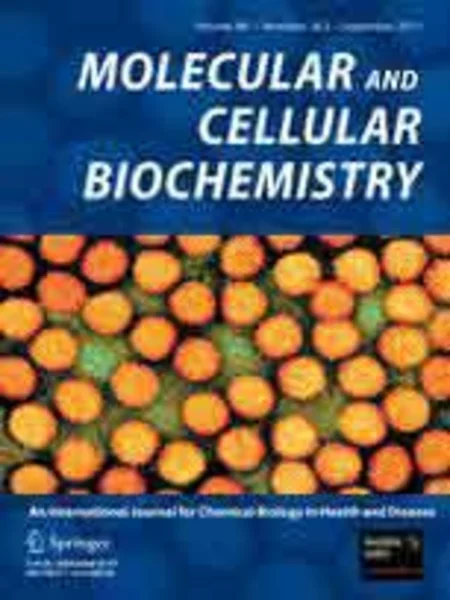-
evaluation of the anti-atherogenic potential of chrysin in wistar rats
جزئیات بیشتر مقاله- تاریخ ارائه: 1392/07/24
- تاریخ انتشار در تی پی بین: 1392/07/24
- تعداد بازدید: 900
- تعداد پرسش و پاسخ ها: 0
- شماره تماس دبیرخانه رویداد: -
hypercholesterolemia is one of the major risk factors that precipitate coronary heart disease and atherosclerosis. oxidative stress is believed to contribute to the pathogenesis of hypercholesterolemic atherosclerosis; hence, various antioxidant compounds are being evaluated for potential anti-atherogenic effects. in the present study, the putative anti-atherogenic and antioxidant efficacy of a flavonoid, chrysin, was evaluated in an experimental model of atherosclerosis. in male, albino wistar rats fed an atherogenic diet for 45 days and treated with saline, significantly higher mean levels of serum lipid profile parameters (total cholesterol, triglycerides, low-density, and very low-density lipoprotein cholesterol), lower mean levels of high-density lipoprotein cholesterol and higher mean serum levels of hepatic marker enzymes (aspartate aminotransferase, alanine aminotransferase, alkaline phosphatase, and lactate dehydrogenase) were observed when compared with the levels in rats fed a control diet. in addition, significantly lower mean hepatic levels of lipoprotein lipase, 3-hydroxy-3-methylglutaryl-coenzyme a (hmg-coa) reductase, antioxidant enzymes (catalase, superoxide dismutase, and glutathione peroxidase) and non-enzymatic antioxidants (reduced glutathione, and vitamins c and e), and a significantly higher mean level of hepatic malondialdehyde (mda) were noted in comparison to the values in control rats. in atherogenic diet-fed rats that received chrysin orally (200 mg/kg b.wt) for 15 days, starting 30 days after the start of the atherogenic diet, significantly lower mean serum levels of lipid profile parameters (except for hdl-cholesterol which was elevated), hepatic marker enzymes, and significantly higher mean hepatic levels of lpl, hmg-coa reductase, enzymatic, and non-enzymatic antioxidants and significantly lower mean levels of hepatic mda were noted, compared to the values in atherogenic diet-fed, saline-treated rats. histopathological studies appeared to suggest the protective effect of chrysin on the hepatic tissue and aorta of atherosclerotic rats. these results suggest that chrysin has anti-atherogenic potential in an experimental setting.
مقالات جدیدترین رویدادها
-
استفاده از تحلیل اهمیت-عملکرد در ارائه الگوی مدیریت خلاقیت سازمانی و ارائه راهکار جهت بهبود
-
بررسی تاثیر ارزش وجوه نقد مازاد بر ساختار سرمایه شرکت های پذیرفته شده در بورس اوراق بهادار تهران
-
بررسی تأثیر سطح افشای ریسک بر قرارداد بدهی شرکت های پذیرفته شده در بورس اوراق بهادار تهران
-
بررسی تأثیر رتبه بندی اعتباری مبتنی بر مدل امتیاز بازار نوظهور بر نقد شوندگی سهام با تأکید بر خصوصی سازی شرکت ها
-
تأثیر آمیخته بازاریابی پوشاک ایرانی بر تصویر ذهنی مشتری پوشاک ایرانی (هاکوپیان)
-
ارزیابی پتانسیل روانگرایی در خاکهای رسی مطالعه موردی: سایت اجرایی ایستگاه پمپاژ جزیره مینو
-
طراحی تفرجگاه ساحلی شهرستان محمودآباد در جهت بهبود تصویر ذهنی مقصد با رویکردی بر ارتقای جذب گردشگر
-
modeling thermal conductivity augmentation of nanofluids using diffusion neural networks
-
improvement of dry float–sink separation of smaller sized spheres by reducing the fluidized bed height
-
ranking the chemical firms listed in tehran stock exchange by topsis method
مقالات جدیدترین ژورنال ها
-
مدیریت و بررسی افسردگی دانش آموزان دختر مقطع متوسطه دوم در دروان کرونا در شهرستان دزفول
-
مدیریت و بررسی خرد سیاسی در اندیشه ی فردوسی در ادب ایران
-
واکاوی و مدیریت توصیفی قلمدان(جاکلیدی)ضریح در موزه آستان قدس رضوی
-
بررسی تاثیر خلاقیت، دانش و انگیزه کارکنان بر پیشنهادات نوآورانه کارکنان ( مورد مطالعه: هتل های 3 و 4 ستاره استان کرمان)
-
بررسی تاثیر کیفیت سیستم های اطلاعاتی بر تصمیم گیری موفق در شرکتهای تولیدی استان اصفهان (مورد مطالعه: مدیران شرکتهای تولیدی استان اصفهان)
-
مروری بر اثر فاکتورها و روش های خشک کردن گیاهان دارویی در فرآیند های پس از برداشت، روی کمیت و کیفیت گیاهان دارویی
-
تاثیر ارزش ویژه برند برموفقیت شرکتهای پیمانکار درمناقصات (مورد مطالعه: شرکت پیمانکاری جهاد نصر زنجان)
-
بررسی تاثیر قیمت نفت و نوسانات آن بر بازده دارایی شرکت ها پذیرفته شده در صنعت شیمیایی و پالایشی بورس اوراق بهادار تهران
-
مواجهه در غیاب ؛ اصول اساسی دیالوگ میان نظریه های ادبی نامتجانس
-
جایگاه دانش سیاسی و مدیریت در علوم حکمرانی




سوال خود را در مورد این مقاله مطرح نمایید :